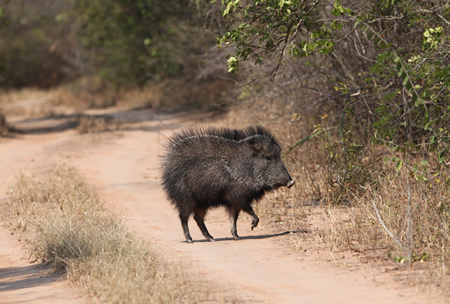Kaodi
Legend
I say " Eurocentric " , but I also mean " Anglo-North Ameri-centric " .
That is too say, does Dungeons & Dragons not draw heavily enough from the menagerie of animals that live in other parts of the world outside Europe, Canada and the United States?
I understand why this might be the case if it is from a origins point of view: Dungeons & Dragons is the product of a certain cultural awareness of animals in why certain animals dominate, as well as being dominantly set it quasi-European and North American landscapes.
But the fact is that D&D is also characterized by a menagerie of both fantastic and real but extinct creatures, so it does not necessarily make sense that good living animals are ignored just because they are traditionally part of our consciousness. Especially when you consider that plenty of campaigns take place in areas that are decidely influenced by Mesoamerican, African, and Asian settings.
As well, we often hear these days that a lot of the mystery has gone out of D&D for older players. You could maybe make a dent in that sentiment if we relied more heavily on what Nature gave us for inspiration. While it might be the case that mundane versions of less well known animals might not be significantly different in action than the well known ones, spiced up with a little magic it could really work.
This is somewhat related I think to what Aeolius does with his underwater campaigns, which get a lot of inspiration from the real world. The topic idea came to me when I was looking at this: Capybara - Wikipedia, the free encyclopedia ; the World's largest rodent (record weight: 232 lbs.; a rodent!) .
That is too say, does Dungeons & Dragons not draw heavily enough from the menagerie of animals that live in other parts of the world outside Europe, Canada and the United States?
I understand why this might be the case if it is from a origins point of view: Dungeons & Dragons is the product of a certain cultural awareness of animals in why certain animals dominate, as well as being dominantly set it quasi-European and North American landscapes.
But the fact is that D&D is also characterized by a menagerie of both fantastic and real but extinct creatures, so it does not necessarily make sense that good living animals are ignored just because they are traditionally part of our consciousness. Especially when you consider that plenty of campaigns take place in areas that are decidely influenced by Mesoamerican, African, and Asian settings.
As well, we often hear these days that a lot of the mystery has gone out of D&D for older players. You could maybe make a dent in that sentiment if we relied more heavily on what Nature gave us for inspiration. While it might be the case that mundane versions of less well known animals might not be significantly different in action than the well known ones, spiced up with a little magic it could really work.
This is somewhat related I think to what Aeolius does with his underwater campaigns, which get a lot of inspiration from the real world. The topic idea came to me when I was looking at this: Capybara - Wikipedia, the free encyclopedia ; the World's largest rodent (record weight: 232 lbs.; a rodent!) .

